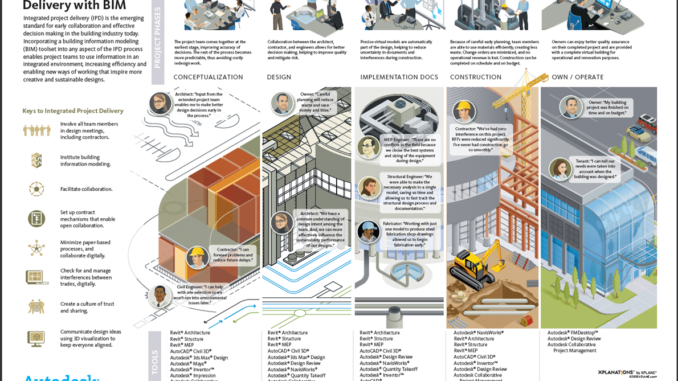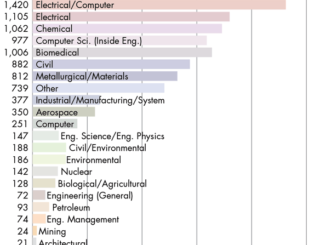
The impact of Building Information Modelling, or BIM, processes has been a turning point in the history of the construction industry. Design workflows have been altered by the arrival of BIM technology, and both the architecture and MEP (mechanical, engineering, plumbing) sectors have had to adjust themselves to emerging design process trends. Traditionally, architects and building engineers have had different design and documentation workflows. These practices have been modified and integrated by using BIM modelling.
In the MEP design sector, the traditional methods of developing a 2D design from a MEP designer into a coordinated 3D model by the contractor is finding less popularity. BIM modelling is largely responsible for this change, and we discuss how this is so.
A majority of engineering work in construction follows information received from the architects’ design, for example column grids for the structural design or ceiling plans for MEP design. Architectural information, such as building geometry, is then used as input for structural load, heating and cooling load analysis by building engineers. Results gathered from such analysis are then applied to the required sizing of components such as structural units, heating and cooling systems. The number and characteristics of structural joints and MEP distribution systems are calculated to determine loads and size connections, structural framing elements, ductwork and piping.
In some cases, architects may have to give up designed areas to include MEP components. At this point, the design layout would have to be modified while maintaining the building’s engineering systems. The use of coordinated 3D models allows MEP integration in the construction plans at an early stage. Therefore, a 3D model-based workflow became a viable option. Models designed with CAD have certain advantages in the MEP design sector, such as the following:
- Studies show that 3D CAD tools improve the development cycle by 30-50%
- Using a 3D model reduces non-conformance issues by 30-40%
- 3D-based design produces fewer inaccuracies
The use of 3D CAD models therefore save time and money and reduces errors.
MEP design typically involves a significant number of stakeholders responsible for the smooth execution of different stages of building engineering. These stages generally include planning, designing, spatial coordination, fabrication, installation and maintenance. Teams involved in building services design usually consist of design engineers (also known as the consultant engineers or building designers) and MEP contractors. Sometimes, a fabricator, who creates ducts, pipes, electric ladders or sprinklers with frame modules, can also be involved in the design process. The design engineer traditionally worked with the architect to oversee lighting, cooling, heating, drainage, waste, fire prevention and protection services. In this case, the design engineer steers clear of the detailed spatial design of the lighting, cooling, heating, etc. It was the MEP contractor, or trade contractor, who would execute the spatial design requirements and installation. The MEP contractor must then develop the consultant design into an installation-ready building services solution.
There were some challenges with this workflow, such as:
- Design data, architectural and MEP, had to be shared.
- MEP design was created by one engineer/team and detailed by other/s.
- Schematics and plans may present inconsistent data or clashes.
- Design changes may occur after design finalisation.
The introduction of BIM modelling provided a solution for these challenges, as designs were converted to 3D models and design data became increasingly centralised and changes were notified to stakeholders at a faster rate. With the use of BIM modelling, five different MEP design workflow options emerged. They are as follows:
1. 2D design with 3D BIM coordination
2D design outputs, such as 2D plan layouts, 2D sections and MEP schematics, are created by the designer using traditional 2D CAD tools and then handed to the Contractor who will create a coordinated Revit BIM model which allows the identification and resolution of clashes before site work begins.
2. 2D MEP design and 3D BIM coordination
2D design layouts are created by the MEP designer – the layouts detail the design intent rather than installation requirements. These layouts are then handed over to the MEP trade contractor for detailed 3D coordination. Architectural and structural models are provided to the contractor to allow coordination also.
3. 3D BIM design and coordination by MEP designers
Design engineers create spatially coordinated Revit BIM models with the actual specified components of the projects. Structural, architectural and MEP service coordination is completed. The resulting model is almost installation ready. Typically during a round of value engineering or preferred installation or fabrication requirements, the MEP contractor will still make final changes.
4. 3D BIM design and coordination by MEP contractors
The responsibility for design and coordination is taken on by MEP contractors. Earlier known as a ‘design and build’ workflow, this method is becoming increasingly popular. The contractor works on the design and model based on the specifications of the client. A coordinated drawing is created from the model for installation or fabrication. This is a fast and cost-effective method, since contractor resources’ costs are lower than those of design engineers. As he is making the final procurement and fabrication decisions this also puts all of the control in one team, thereby streamlining the process somewhat.
5. 3D coordination by general contractors
2D architectural, structural and MEP designers work for a general contractor. The team will also typically include detail teams that handle coordination to the level of an MEP trade contractor. A 3D BIM model is created for the contractor to review the model’s strength and adherence to the design. The model is then checked for clashes.
Though there are five different MEP workflows, there is one traditional architectural design workflow, which consists of three basic phases. They are:
1. Schematic Design
Space form and function are conceived by the architect and converted from sketches into a 3D model.
2. Design Development
CAD technicians add dimensions, details and supporting information to the 3D models. Mechanical, electrical, plumbing and life safety drawings are generated. Using standard parts libraries and including tagged component data early in this phase enables productivity tools that enhance construction or shop drawings.
3. Construction Document
Accurate detailed drawings show construction materials, component data sheets, specifications and material or component schedules. Data can be assigned to walls, floors and the building envelope in the model, as well as steel and concrete rebar component information and piece detail information.
Seeing that MEP and architectural workflows are distinct, how does the use of BIM technology integrate the two? BIM engineering modelling tools can integrate engineer-designed building content with architectural BIM models for clash detection. Here’s how:
Construction software platforms, such as BIM 360, use cloud-based checklists to enable quality control, on-site safety, tracking of equipment and monitoring of tasks. Project stakeholders, such as project managers, subcontractors, designers and architects can access, change and update data. Models designed using BIM 360 can generate 2D construction documents and 3D MEP coordination. MEP designers can, therefore, plan designs more effectively if projects include 3D modelling of architectural and trade aspects from the beginning.
Round-Trip Transportation
Architectural models created using BIM do not traditionally show the partitioning of volumes and surfaces spatially, which is required for building energy analysis packages in MEP. Revit MEP takes care of the repartitioning of architectural models into units that can be analysed for seamless building services. So, BIM model-authoring tools enable the round-trip transportation of building data from architectural models to MEP analysis tools and back to the architectural model with coordinated and reintegrated engineering components.
Certain aspects of engineering analysis can be integrated into architectural design for greater interactive communication with the use of specific tools. Architects can then receive direct feedback about the MEP effects of their architectural designs. Tools that offer these capabilities include IES plug-ins to Revit MEP or Revit Architecture. Recent software program acquisitions by Bentley and Autodesk have led to increased facility for interoperability, where engineers may prefer a particular analysis package for internal workflow but are restricted by a model-creating software suite required by project agreements. Enabling cross-platform workflows was a leading cause of establishing the Industry Foundation Classes (IFC) standard, now better known as buildingSMART.
Integrated architectural and MEP workflows are steadily gaining in popularity in building design circles due to ongoing technological developments. With IFC standard guiding principles, architects and MEP engineers can use the data garnered from other disciplines for reference while coordinating and sharing projects. Ultimately, initial gathering of MEP analysis data and implementing successful building information modelling can help architects design an integrated project that can be executed in a seamless construction process.
Proudly WWW.PONIREVO.COM



